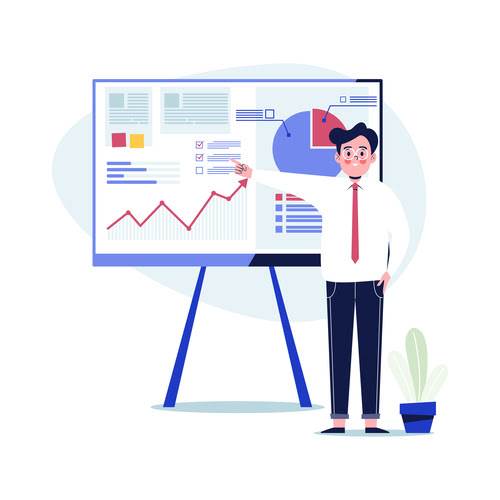The cloud is a hot topic for small businesses all the way to global enterprises, but remains a broad concept that covers a lot of online territory. Basically, it is a service where a third-party provider provides both software and hardware tools to the cloud computing. It has a well-equipped management system and is less expensive compared to IAAS.

XaaS refers to the highly-individualized, responsive, data-driven products and offerings that are fully controlled by customers—and the data they provide via everyday IoT-powered sources like cell phones and thermostats. SaaS provides numerous advantages to employees and companies by greatly reducing the time and money spent on tedious tasks such as installing, managing, and upgrading software. This frees up plenty of time for technical staff to spend on more pressing matters and issues within the organization. Below are the Actors defined by NIST and since developers(tech company that provides software) partners with cloud provider, developers best match is cloud provider. For example, if you want to have a Hadoop cluster on which you would run MapReduce jobs, you will find EC2 a perfect fit, which is IaaS.
When to Use IaaS
Start-ups or smaller companies that may not have the human capital, time, or money to create and manage personalized software applications for themselves can effectively use Saas. SaaS will enable you, as a start-up, to quickly pick and choose what tools you need to use to begin to grow your business. Additionally, any short-term project would benefit from SaaS because it provides a fast, affordable, and flexible solution to many problems.
The skills and knowledge learned from a general certificate like this can apply to many jobs with cloud providers. In general, you should compare and contrast the benefits of attaining each top certification and what is saas choose the ones that will help further your career. IaaS, also known as Cloud Infrastructure Services, allows you to rent IT infrastructures, such as physical and virtual servers, storage, and networking.
Horizontal vs. Vertical Scaling: Understanding Key Differences, Advantages, and…
Build an intelligent workplace where remote teams connect and collaborate at any time, securely and productively from home, the office, or on the road. SaaS simplifies access to essential software solutions, so users can concentrate solely on harnessing the tool’s capabilities for their tasks and objectives. As your business grows, you can change the specific hardware and software you rent to address your evolving needs adequately. Companies experiencing rapid growth will also greatly benefit from IaaS because of the flexibility to change the resources used as the business grows. IaaS grants you the flexibility of utilizing specific resources when needed without owning the infrastructure and paying a large amount of capital up-front. IaaS makes computing resources on-demand and available for you to rent to address periodic shifts in usage.
Today, even the most complex and powerful software is available via an internet connection, and software updates are seamless. PaaS has less flexibility than a development environment that uses only IaaS, and its use is narrower. A PaaS solution may support only specific approaches to application development. A PaaS platform can make new technology available to developers faster than an in-house environment. New features can be consumed as soon as they become available, and PaaS environments are often optimized to take advantage of advanced technology that developers can use to enhance their applications.
Companies
It’s worth getting to grips with what each has to offer, as there are some important differences. This all means SaaS is more suitable for startups and small businesses wanting to hit the ground running. On the other hand, PaaS and IaaS are more likely to be suitable for larger businesses.

As a result, the number of jobs in this space has increased, making them some of the most desirable. Organizations of all sizes and types utilize cloud computing services for many reasons. A Software-as-a-Service (SaaS) solution provides everything you need to use a cloud-based software application over the internet. Users access the software over the internet using a web browser or desktop interface that allows work to continue even when an internet connection is temporarily unavailable. PaaS includes infrastructure (i.e. IaaS), but adds a development framework, application infrastructure, middleware, container systems like Kubernetes, and other pre-built components, development tools and resources.
Here, we will discuss 10 different parameters to highlight the distinctions between these cloud computing service models. IaaS provides you the most freedom of control as it lets you manage your applications, data, middleware, and operating system. On the other hand, PaaS allows you to manage your data and applications only, and with SaaS, everything is managed by your service provider. IaaS helps the user save time and costs as the service provider manages the hardware setup.
- Everything from human resources, financial reporting, supply chains, to simple mobile applications have benefited from cloud deployments.
- With the cloud, organizations are now able to gain new efficiencies, quickly deploy IT services, and transform their operations.
- You typically pay for SaaS on a subscription basis, giving you the flexibility to try different software and alter the tools you use based on what you need at a given time.
- IaaS is highly scalable and allows businesses to purchase resources on-demand, making it an ideal solution for temporary, experimental, or changing workloads.
- IBM’s rich and scalable PaaS solutions help organizations develop cloud native applications from scratch, or modernize existing applications to benefit from the flexibility and scalability of the cloud.
IaaS facilitates small-sized businesses and organizations seeking an inexpensive cloud solution to support their business. It works on the pay-as-you-go model, so a user has to pay for only the services they use, negating any extra charges. It is available to the users as a public, private, or hybrid deployment model. In contrast, PaaS, or Platform as a Service, is the realm where developers thrive. It delivers an execution environment, along with a suite of application development and deployment tools.
